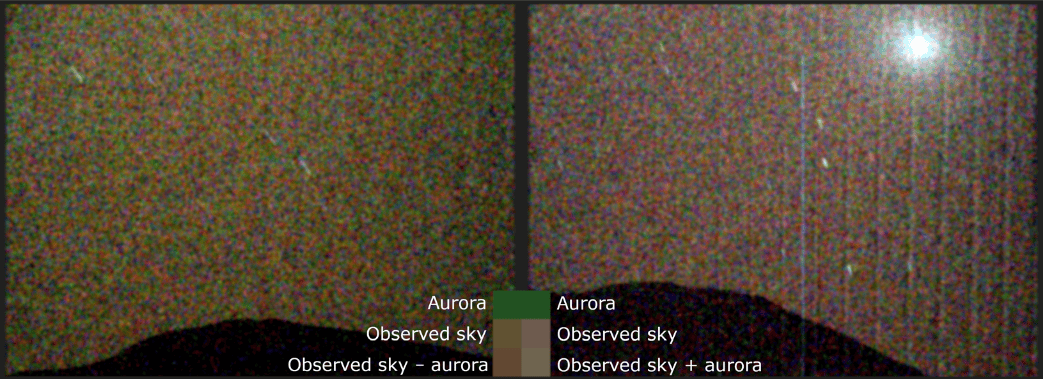“Trapped in a Quantum Conundrum: The Hidden Threat to Atom Traps” In the realm of quantum physics, scientists have made tremendous breakthroughs in harnessing the power of atoms and subatomic particles. Atom traps have emerged as a revolutionary tool, allowing researchers to confine and study these microscopic marvels with unprecedented precision. However, a recent study has thrown a wrench into the works, casting a shadow over the future of these delicate traps. It appears that a previously unknown phenomenon, known as five-body recombination, could be the silent saboteur behind significant losses in atom traps. In this article, we’ll delve into the fascinating world of quantum physics and explore the unexpected threat that’s got researchers scrambling for answers.
The Principal Loss Channel: Five-Body Recombination

In the realm of ultracold atom traps, a new study has revealed that five-body recombination could be the primary contributor to loss at specific “Efimov resonances”. This process, which is less well understood than three- and four-body recombination, has the potential to be useful for building and potentially for modeling nuclear fusion.
As physicist Chris Greene of Purdue University explains, “They couldn’t turn off three-body [inelastic collisions], and that turned out to be the main reason atoms leaked out of the condensate.” This phenomenon has been a subject of interest for researchers, who have been attempting to understand inelastic three-body collisions and their implications.
Implications of Five-Body Recombination
New Molecules
The five-body recombination process has significant implications for the creation of new molecules. As Greene notes, “For most ultracold experiments, researchers will be avoiding loss as much as possible – they would stay away from these resonances.” However, for those interested in how atoms bind and resonate, and how to describe complicated rearrangement, it’s really interesting to look at these points where the loss becomes resonant and very strong.”
Potential Applications in Nuclear Fusion
In the future, Greene hopes to apply the model to nucleons themselves. “There have been very few people in the few-body theory community willing to tackle a five-particle collision – the Schrödinger equation has so many dimensions,” he says. The potential applications of this research are vast, including the possibility of modeling nuclear fusion reactions.
The Bigger Picture: Few-Body Interactions
The Complexity of Few-Body Collisions
Few-body interactions are inherently complex, involving the collision of multiple particles simultaneously. As Greene notes, “They couldn’t turn off three body [inelastic collisions], and that turned out to be the main reason atoms leaked out of the condensate.” This complexity has led to a significant amount of research into the understanding of these interactions.
The Importance of Understanding Few-Body Interactions
The importance of understanding few-body interactions cannot be overstated. As Greene explains, “For most ultracold experiments, researchers will be avoiding loss as much as possible – they would stay away from these resonances.” However, for those interested in how atoms bind and resonate, and how to describe complicated rearrangement, it’s really interesting to look at these points where the loss becomes resonant and very strong.
Conclusion
The Dark Side of Atom Traps: Unlocking the Secrets of Five-Body Recombination
As we delve into the intricacies of atom traps, a recent article published in Physics World has shed light on a pressing concern that could significantly impact our understanding of these delicate systems. The topic of five-body recombination, a previously overlooked phenomenon, could be causing substantial loss from atom traps, challenging the efficiency and reliability of these critical tools in quantum research. The article highlights the key points, demonstrating that five-body recombination is a complex process involving the simultaneous interaction of five atoms, resulting in the loss of two or more atoms from the trap. This phenomenon is particularly significant in ultra-cold atom systems, where even minor losses can have a substantial impact on the trap’s overall performance.
The implications of this discovery are far-reaching, with significant repercussions for the field of quantum research. As researchers continue to push the boundaries of atom traps, understanding the mechanisms of five-body recombination is crucial for optimizing trap design and minimizing losses. This knowledge will enable scientists to develop more efficient and robust trap systems, paving the way for breakthroughs in quantum computing, quantum simulation, and precision spectroscopy. Furthermore, the study of five-body recombination opens up new avenues for exploring the fundamental principles of quantum mechanics, shedding light on the intricate dance of atomic interactions.
As we embark on this new frontier of research, we are reminded of the intricate beauty and complexity of quantum systems. The discovery of five-body recombination serves as a poignant reminder that the pursuit of knowledge is a never-ending journey, filled with unexpected twists and turns. As we continue to unravel the secrets of atom traps, we are compelled to ask: what other hidden mechanisms lie in wait, waiting to be uncovered? The journey ahead promises to be filled with excitement, discovery, and innovation – and we are eager to see where the pursuit of knowledge will take us next.